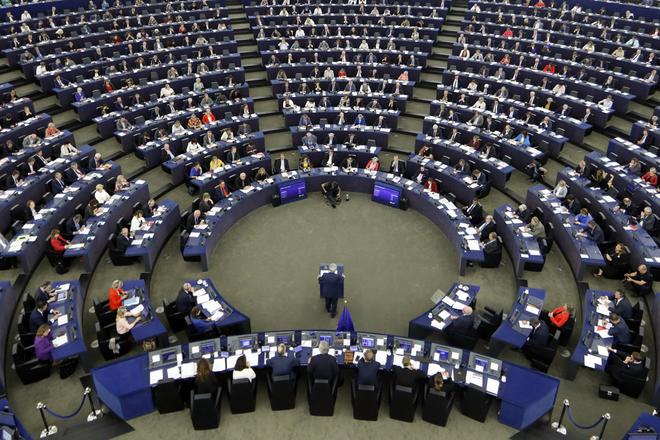Seven parties would pass the 5-percent threshold if the upcoming EP election took place at Slovak schools.
Students older than 15 years of age would give their votes to the candidates of the far-right People’s Party – Our Slovakia (ĽSNS) of Marian Kotleba, the coalition of Progressive Slovakia (PS) and Spolu (Together), the Ordinary People and Independent Personalities (OĽaNO), Sme Rodina (We Are Family), Freedom and Solidarity (SaS), Smer and Priama Demokracia (Direct Democracy).

This stems from a simulated student election organised by the civic association Pre Stredoškolákov (For Secondary School Students) on May 2-3 and May 6-7 on 204 secondary schools and two universities across Slovakia.
The schools delivered altogether 101 valid reports. There were 25,674 eligible voters.
Opposing moods among young people
There was a 40.62 percent turnout in the simulated election, with 10,010 valid ballots being processed.
Who would make it to the EP?
ĽSNS:
Milan Mazurek
Marek Kotleba
Milan Uhrík
Progressive Slovakia & Spolu:
Michal Šimečka
Dominik Hatiar
Lucia Kleštincová
OĽaNO:
Igor Matovič
Michal Šipoš
Sme Rodina:
Eva Hudecová
Petra Krištúfková
SaS:
Lucia Ďuriš Nicholsonová
Smer:
Monika Beňová
Priama Demokracia:
Ibrahim Maiga
The turnout was not affected by the regions, founders of schools or the type of education. As a result, other factors had an impact, such as the support of the school’s management, the recognition of teachers, the promotion at schools and the way the student elections were organised.
However, there were differences when it comes to preferences. While the secondary vocational schools and other specialised schools preferred ĽSNS, students at grammar schools voted mostly for the coalition of PS and Spolu.
“It can also be expected that an important factor when choosing the candidates was whether they are recognisable,” Karolína Schwabová, spokesperson for the Student Elections project, wrote in a press release.
This is reflected in the fact that actor Ibrahim Maiga received many votes despite a weak campaign, she added.
Another important factor was whether students know what the EU is doing and how it works.
“The results indicate the suggestibility of students by a populist anti-EU campaign,” Schwabová added.
The fact that two contrary parties clinched the first two spots suggest opposing moods among young people. Some feel resigned and fearful while others are hopeful and in need of positive change, she said.



 European Parliament, illustrative stock photo (source: AP/TASR)
European Parliament, illustrative stock photo (source: AP/TASR)